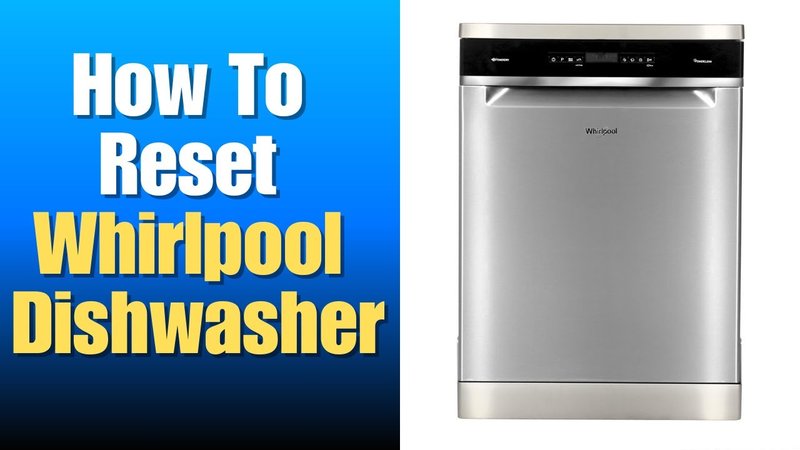
Now, why does this happen? Think of it like a morning shower: you wouldn’t enjoy it if the water was cold, right? Your dishwasher feels the same way. It needs the water to be at a certain temperature to clean your dishes effectively. When something interferes with this, like a malfunctioning heating element, the dishwasher throws an E3 code, effectively saying, “Hey, I can’t work like this!” But don’t stress — resetting your Whirlpool dishwasher is often the first step to getting things back on track.
Understanding the E3 Error Code
First things first, let’s dive a bit deeper into what this E3 error is telling you. Basically, this code indicates a problem with the water temperature. For your Whirlpool dishwasher to clean dishes properly, the water needs to reach a specific temperature. If it doesn’t, the machine senses it and halts the operation, flashing the E3 code to alert you.
Why does this happen? There could be several reasons. It might be an issue with the heating element, which is sort of like the kettle inside your dishwasher, warming up the water to the desired temperature. If the heating element is faulty, it’s like trying to make a hot cup of coffee with a broken kettle — it just won’t work. Alternatively, your dishwasher thermostat might be on the fritz, sending wrong signals about the water temperature.
Another possible cause is a glitch in the machine’s control board — the dishwasher’s brain, if you will. If something’s wrong there, it might not send the right instructions to heat the water. Identifying which of these is the culprit is key to fixing the error. But let’s not get too far ahead; we’ll start with the simplest fix: the reset.
Steps to Reset Your Whirlpool Dishwasher
You might be wondering, “Can I really fix this myself?” Absolutely! Resetting your dishwasher is something anyone can try, even if you’re not particularly tech-savvy. Here’s the deal: resetting is like giving your dishwasher a quick nap to reset its brain and clear any minor glitches. Here’s how you can do it.
First, unplug your dishwasher or turn off the circuit breaker that powers it. It’s crucial to cut off the power completely. Imagine it like when your phone is acting up, and you decide to restart it. You’re essentially doing the same thing, but with your dishwasher. Once the power is off, wait for about a minute. This pause allows the machine to fully power down.
After waiting, plug the dishwasher back in or flip the circuit breaker back on. Once you restore power, many Whirlpool models automatically reset themselves. You might even hear some noises as it goes through a quick diagnostic check. Now, try starting a wash cycle and see if the pesky E3 error has disappeared. If it hasn’t, there may be a deeper issue at play, but don’t lose hope just yet.
When Resetting Isn’t Enough
If resetting hasn’t done the trick, we might be dealing with something more than just a minor glitch. Let’s talk about what to check next. First, consider the heating element. It’s like the heart of the temperature system. If this component isn’t working right, the water won’t heat, causing the E3 error. You can inspect this part by removing the lower panel of the dishwasher (of course, with the power off for safety!). Look for any obvious signs of damage or wear.
Next, check the thermostat. This little device is like the thermometer in your dishwasher, keeping tabs on water temperature. If it’s faulty, it might not be reading temperatures correctly. Unfortunately, diagnosing a thermostat isn’t as straightforward, so you might need a multimeter or a professional’s help.
If all else fails, the control board might be the issue — the dishwasher’s brain, remember? A professional technician can help with this part, as tinkering with it yourself might lead to more problems if you’re not experienced. Hopefully, one of these checks will help you resolve the issue and you’ll have your dishwasher running smoothly again.
Preventative Tips to Avoid Future Errors
Once you’ve tackled the E3 error, it’s time to think about keeping it away for good. Regular maintenance can be a lifesaver. You wouldn’t ignore your car’s engine for years, right? The same goes for your dishwasher. Ensuring everything runs smoothly can save you headaches down the line.
For starters, regularly check and clean the dishwasher’s filter. It’s like the lungs of your machine, and if it’s clogged, everything else struggles. Make it a habit to check for blockages or food particles that could accumulate over time. Also, keep an eye on your water inlet valve. This part controls the water supply to your dishwasher. If it fails, it’s like having a leaky faucet — not good for anyone.
Finally, consider running a cleaning cycle without dishes every few months using a dishwasher cleaner. This keeps internal parts free from lime scale and build-up, ensuring the heating element, in particular, remains efficient. By following these tips, you’ll not only have cleaner dishes but a longer-lasting machine. Keep these handy steps in mind, and your dishwasher will be running like a champ, without any fuss.